We have opened an Etsy store where we are selling a limited number of fully-built Fort Processor synths, as well as unpopulated PBCs: https://www.etsy.com/uk/shop/isntses
|
|||||||||||||||
| fort_process_v1_green_build_docs1_2021.pdf | |
| File Size: | 3492 kb |
| File Type: | |
Black PCB version:
| isntses_fort_processor_build_guide_v2.pdf | |
| File Size: | 1100 kb |
| File Type: | |
We have made a demo of the Fort Processor demonstrating how it works as a standalone synth and with an instrument connected to the input.
We currently have the full ready built synth for purchase on the Fort Process Crowdfunder:
https://www.indiegogo.com/projects/fort-process-2018
Please email us if you want to purchase the PCB on it's own at: [email protected]
https://www.indiegogo.com/projects/fort-process-2018
Please email us if you want to purchase the PCB on it's own at: [email protected]
Pictures of the PCB and artwork
To connect the Fort Processor's input and output sockets to other equipment (e.g. amplifier, mixer, instruments) we suggest a need a cable like this. Find it on Amazon.
We have ordered the PCBs for the Fort Processor synth! Initially we tried to use JLCPCB, one of the biggest PCB manufacturers, but getting them to cut the irregular shape we need turned out to be impossible without some redesign work (we would have had to manually panelize it ourselves). So we went with AllPCB instead, they accepted our files without issue and we will hopefully have the finished boards very soon.
Here are some screenshots showing the PCB design process using Kicad:
Diagram showing the functions of the ICs and the controls:
Here is a video about process of making a PCB, interesting if you can get past the presenter's irritating style:
Never before has a list gradually updating itself seemed so exciting.
Isn'tses noise synth circuit for Fort Process now has a name - "The Fort Processor" - and can be pre-ordered, as a full kit or just the PCB, on the festival's crowdfunding page: https://www.indiegogo.com/projects/fort-process-2018#/
We are playing around with a few ideas on touch pad shapes/patterns/mutations. These shapes were developed by taking asemic drawings I had made and seeing how they worked with the artwork. They are like mutations or organic forms.
Drawings by Lisa McKendrick
Drawings by Lisa McKendrick
| Shoshana Zuboff I like the idea that the Fort Processor is a mutation like those described in this quote. | Stanislaw Lem - Solaris How this ties in with the Fort Processor may seem fairly obvious. The disruption of signals and fragmented frequencies was something that we hoped we could achieve with this synth. |
Here is a screen shot of KiCad and shows the connections between the chips and other parts of the circuit. An asymmetriad is forming.
We had to abandon the radio chip. The interference and noise that was being generated by the chip was not the "right kind" of noise. However the other sounds we were getting from the synth were better than expected, and we decided to use an audio input instead, making it possible to use an external radio via the input. This also opened up the possibility of connecting a range of devices though the audio input. While our initial idea was to have a synth that was a radio, we decided that it was best left for another project, and it was nevertheless instrumental in helping us to achieve the result we ended up with. The development process was eye opening and we have a much better idea on how certain elements work and do not work in this setting. Also influencing this decision was that the components required would mean that the space would start to get cramped on such a small PCB. We decided that it is okay to give up on the part of the circuit that initially inspired the idea. Problem solving can end up going around in circles and we had to eliminate the part that was not working, so that we could move forward. One of the advantages of having a deadline to work towards is that there is no option to let things drag on forever. So what we now have is four CMOS chips: 4040, 4093, 4066, 4049. We have a very interesting circuit that will take a signal and cut up or process the sound with oscillation, delay, pitch shifting and speed control. A Fort Processor emerged!
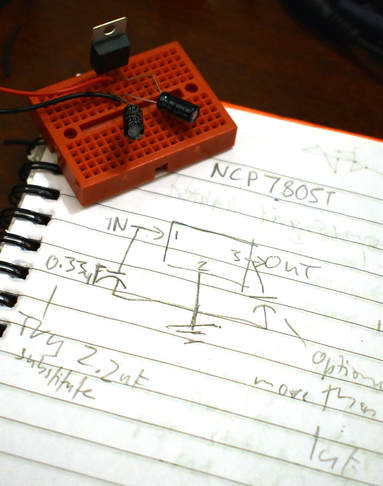 Initial voltage regulator test
Initial voltage regulator test Work on the circuit continues! An unexciting but important problem to be overcome in any electronic designs is that different chips and components require different voltage supplies if they are to function properly and not explode. We want to be able to power the finished synth from 9v (eg battery or a standard guitar FX pedal power supply) and also 12v for modular synth compatibility. However the AM radio part of the circuit can't handle more than 6v and some other parts we are working with need 5v. So we need to somehow divide the voltage. There are a few methods of doing so. One which appealed to me because it's a counterintuitive hack using very few components is to misuse an LM386 amplifier IC as a voltage divider (an idea I found on this forum thread). You can just connect the +9v and ground pins to your power source, don't put any input signal to the amplifier and it sends out half the voltage! But though it's small and easy, it's not all that accurate and can only chop the input voltage in half rather than give you exactly 5v, so in the end we decided it's better to do it properly with a real voltage regulator. These only require the addition of 2 capacitors to get them working, simpler to use than I expected. For testing we tried the NCP7805 as pictured above, but that is overkill for our power requirements and would take too much space on the board, so we switched to the similar but smaller 78L05. Below you can see it putting out 5.04v, definitely close enough for our purposes. We have been using this to power our test circuits.
In other news, we have the radio part of the circuit working very well now, amplified/distorted using a CD4049 Hex Inverter (another classic creative misuse of an IC, as popularised in Nicolas Collins book Handmade Electronic Music). It picks up both noise and discernible radio signals in an interestingly chaotic way and is highly playable by touching the circuit or even waving hands over it.
For our general research into radio-electronics-as-noise-instruments, and low-voltage tube amplifier + distortion circuits, radio expert Mike Kana very kindly sent us a wealth of rare and interesting vintage components which will be very useful for future Isn'tses circuits! Thanks Mike!
This is the recent. What's happening? it's getting there. There was some problem solving which took a lot of development and we had to change our initial ideas for the synth. We documented some of this by having writing conversations. We developed some really nice sounds which are here:
A post shared by Lisa Mckendrick Isn'tses Nnja (@lisa_mckendrick) on
Writing conversation where we decided that there was too much interference while using the echo chip. We also discovered that when using the radio chip that the human body can act as an aerial.
The drawings have been developed further here with more complex patterns exploring both currents (electrical) and currents (tidal). Drawings by Lisa McKendrick.
Here is an experiement to see how the touch pads might work. The metal stripboard on the left is our touchpad for now.
We researched some of the ways that body contact can affect pitch.
Inspirations:
Here are some fellow builders of electronics who we've been greatly inspired by:
Martin Howse, who designed the Micro-blackdeath and the Dark Interpreter which we have used extensively in Isn'tses performances. Great sounding and highly original instruments with esoteric and alchemical concepts behind them.
http://www.1010.co.uk/org/darkint.html
Martin Howse, who designed the Micro-blackdeath and the Dark Interpreter which we have used extensively in Isn'tses performances. Great sounding and highly original instruments with esoteric and alchemical concepts behind them.
http://www.1010.co.uk/org/darkint.html
We've been doing a lot of research towards the design of our synth for Fort Process and some interesting responses to our debut blog post. We were honoured to get some input from father of circuitbending Q. Reed Ghazala who suggests possibilities of water-controlled synthesis:
Our friend Hannah helpfully suggested that we look at Thomas Henry's 'Mega Percussive Synthesizer'. The theory page about this synth has a wealth of useful ideas including the following:
This is very relevant to our concepts for the circuit since we will be using an AM radio chip as a noise source and intend to evoke sounds inspired by the Fort including gunshots and the ocean.
Radio was very important during the world wars when Newhaven Fort was an active military site so we have been looking for inspiration at wartime radios. The rugged and often improvised DIY construction of these devices is reminiscent of the aesthetic of our own noise instruments. Below is a collage of interesting things we found on radio devices and some of our video hardware imagery.
Radio was very important during the world wars when Newhaven Fort was an active military site so we have been looking for inspiration at wartime radios. The rugged and often improvised DIY construction of these devices is reminiscent of the aesthetic of our own noise instruments. Below is a collage of interesting things we found on radio devices and some of our video hardware imagery.
After looking at arial views of Newhaven Fort and this tunnel video I was interested in the shards of light cast in the dark tunnel and have done some rough sketches of artwork for the PCB. We are limited with the amount of colours so may end up with textured patterns, see below.
- Drawings by Lisa McKendrick
We've modified the diagram to show our idea for having touch control pads and a diagram of the chip we are wanting to use:
We've modified the diagram to show our idea for having touch control pads and a diagram of the chip we are wanting to use:
Author
Lisa McKendrick
Tim Drage
(Isn'tses)
Archives
May 2024
March 2024
February 2024
December 2023
August 2023
July 2023
January 2023
November 2022
July 2022
March 2021
December 2020
October 2020
September 2020
July 2020
June 2020
November 2019
June 2019
May 2019
February 2019
January 2019
October 2018
September 2018
August 2018
July 2018
June 2018
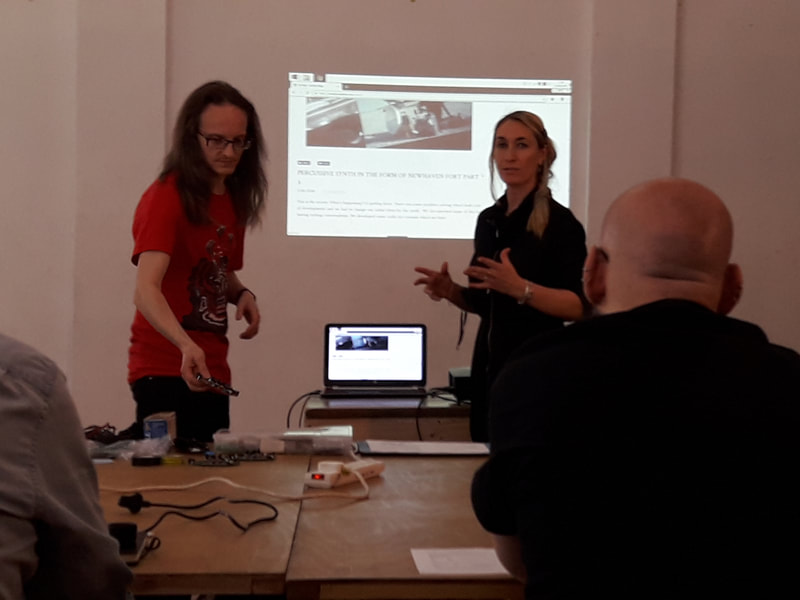
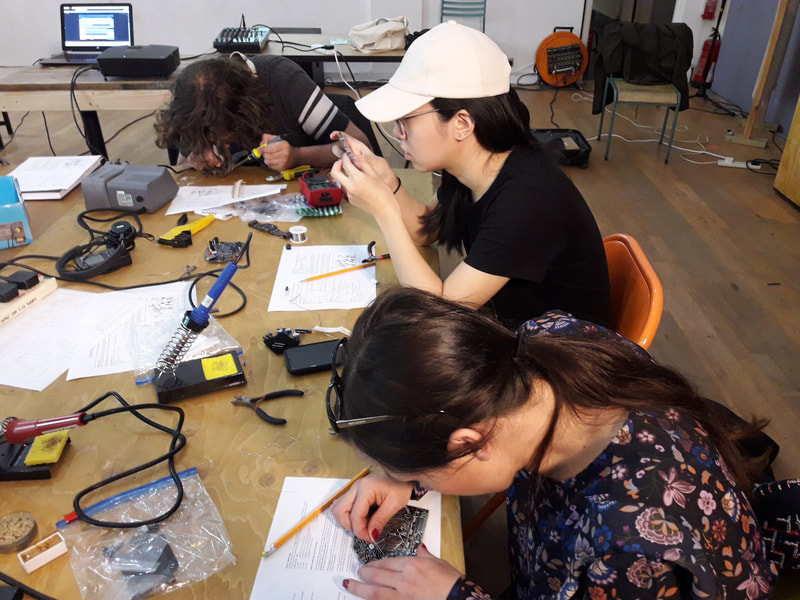
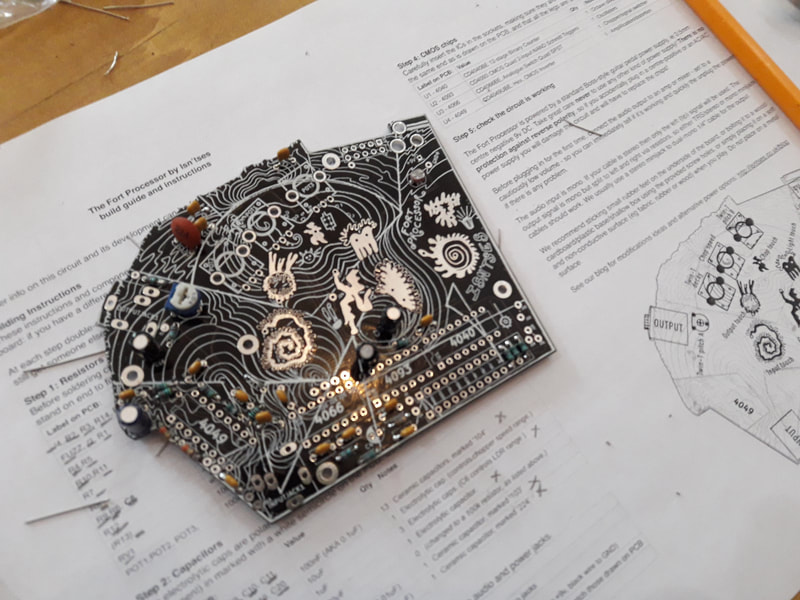
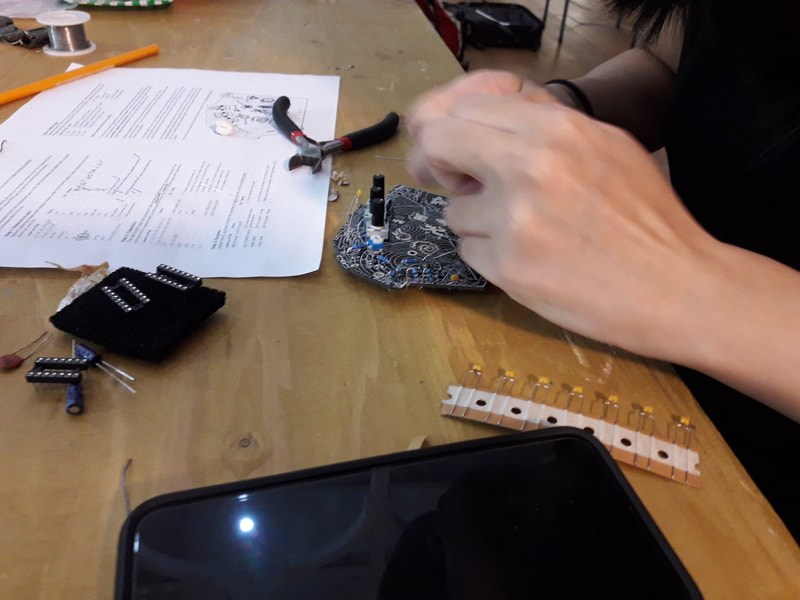
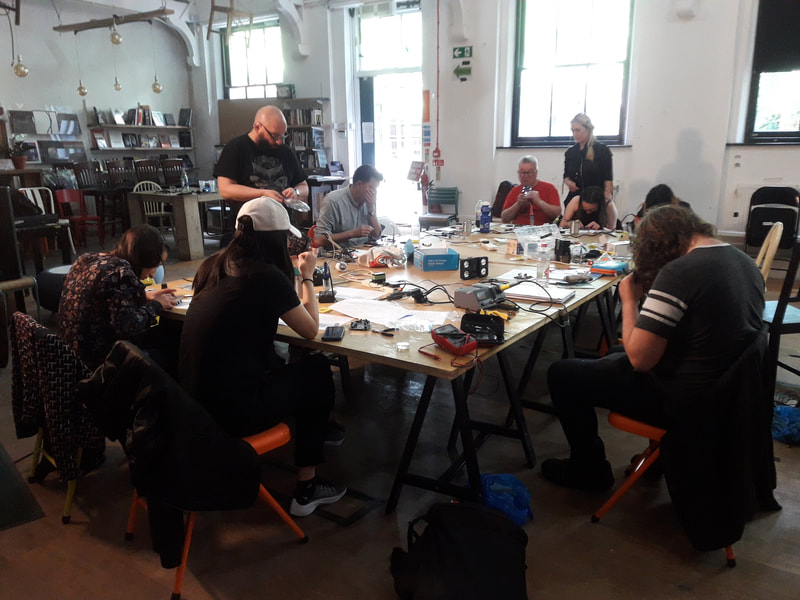
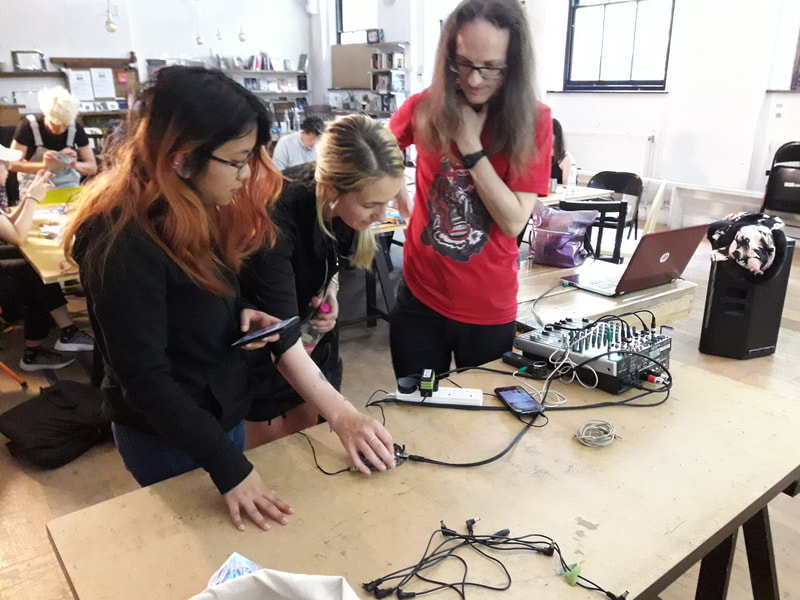
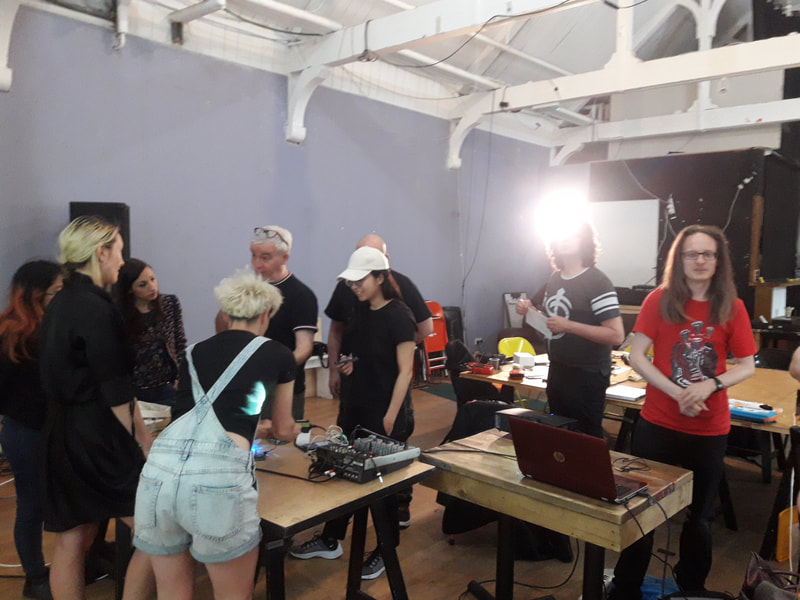
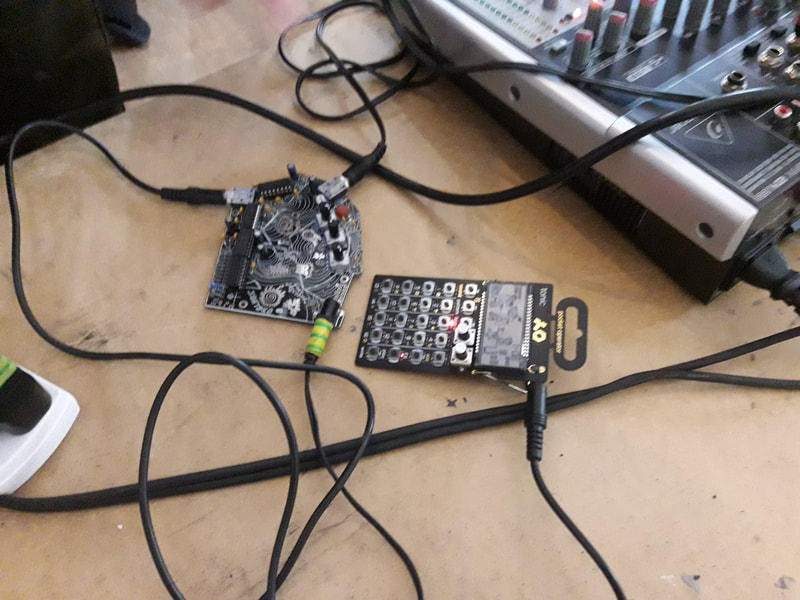
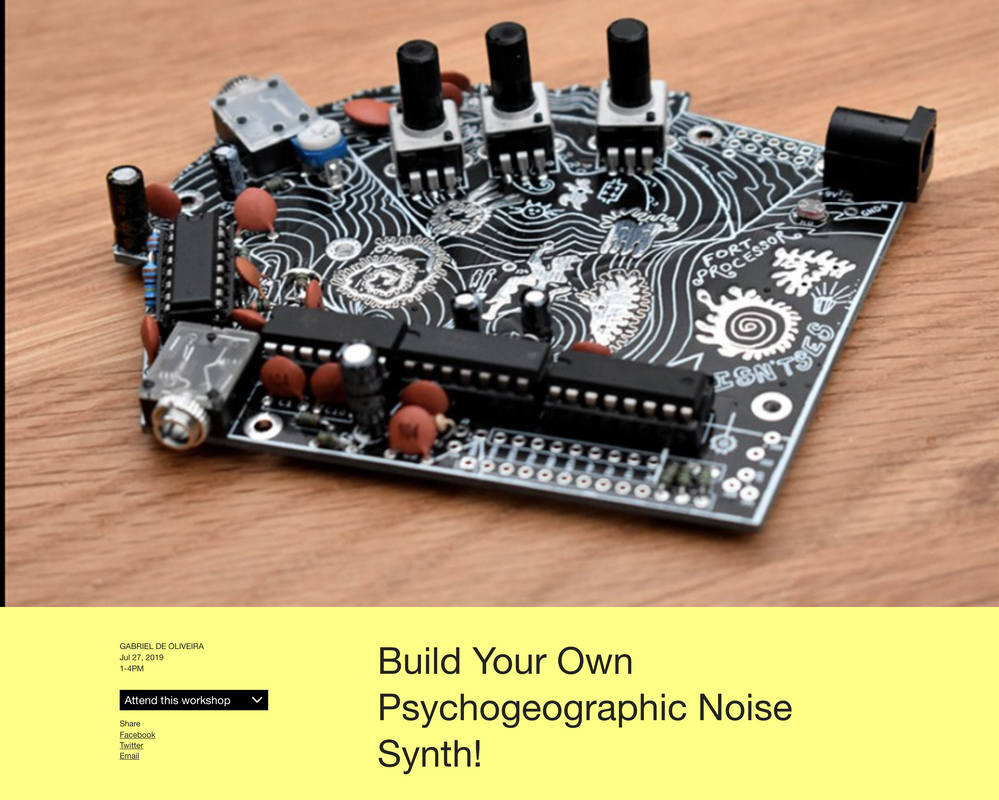
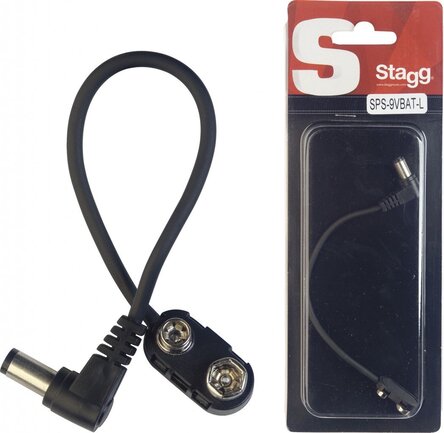
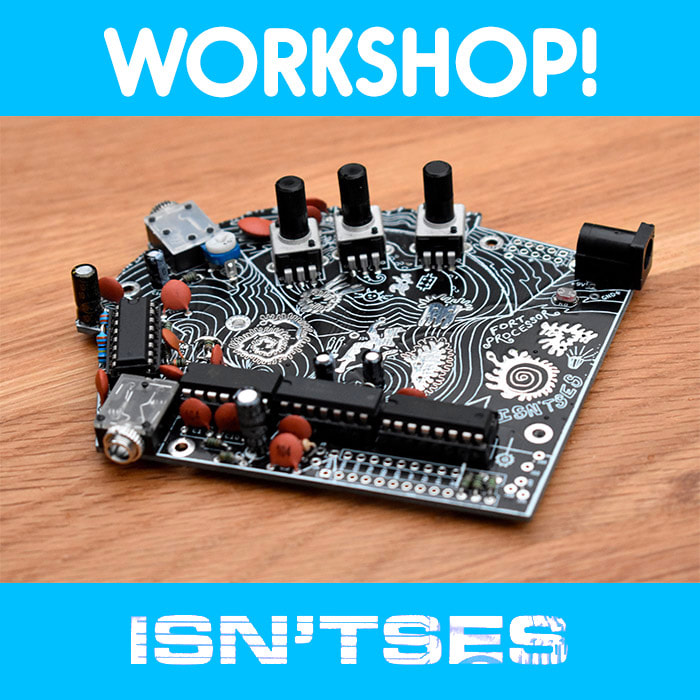
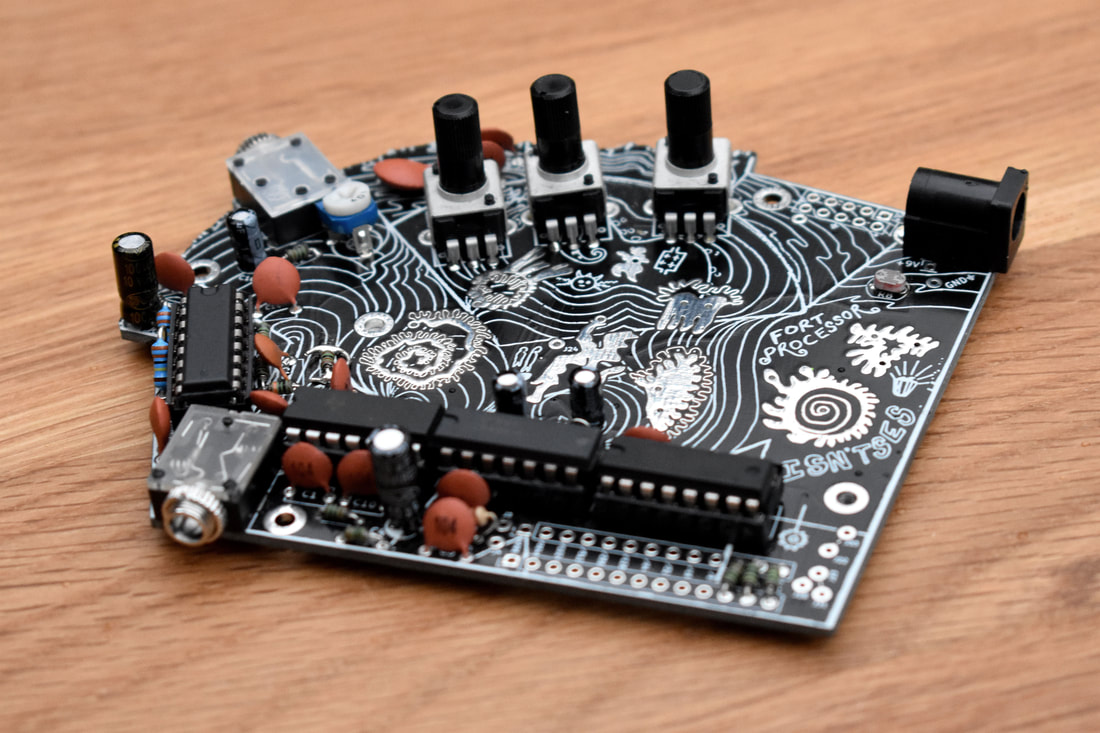
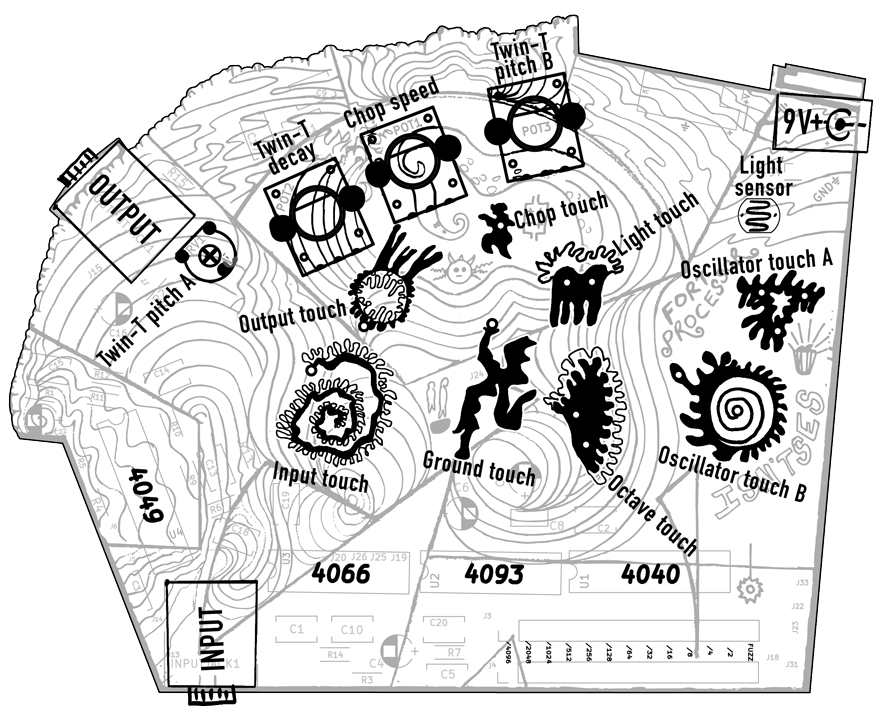

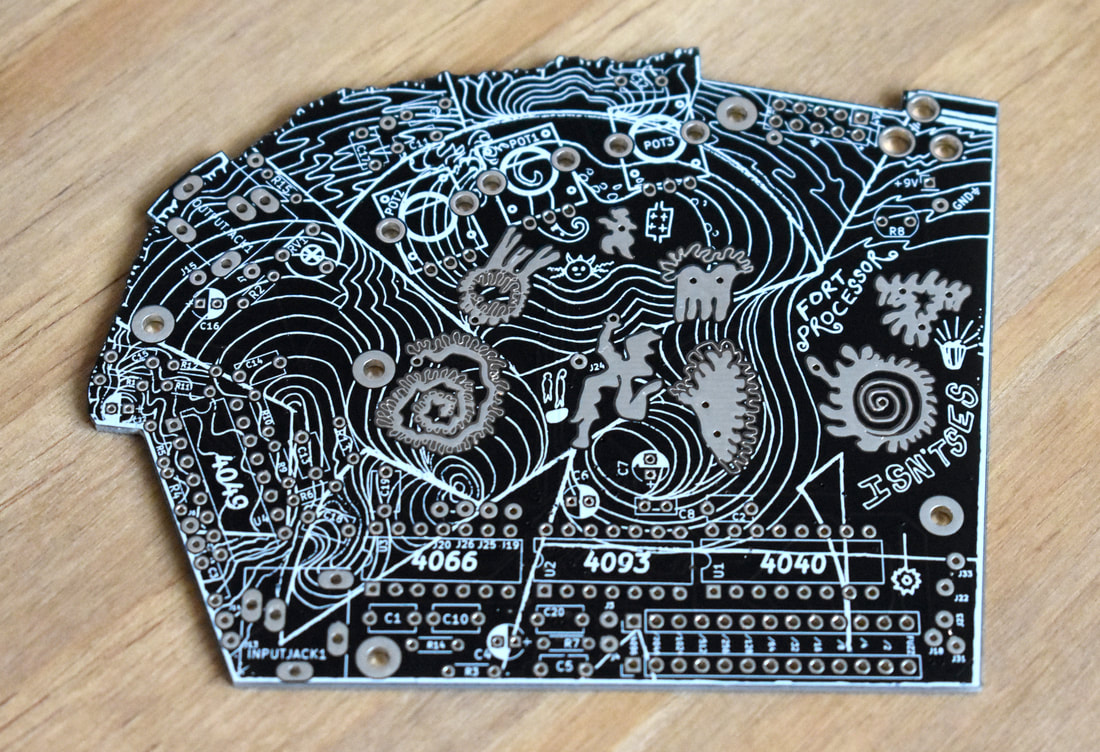
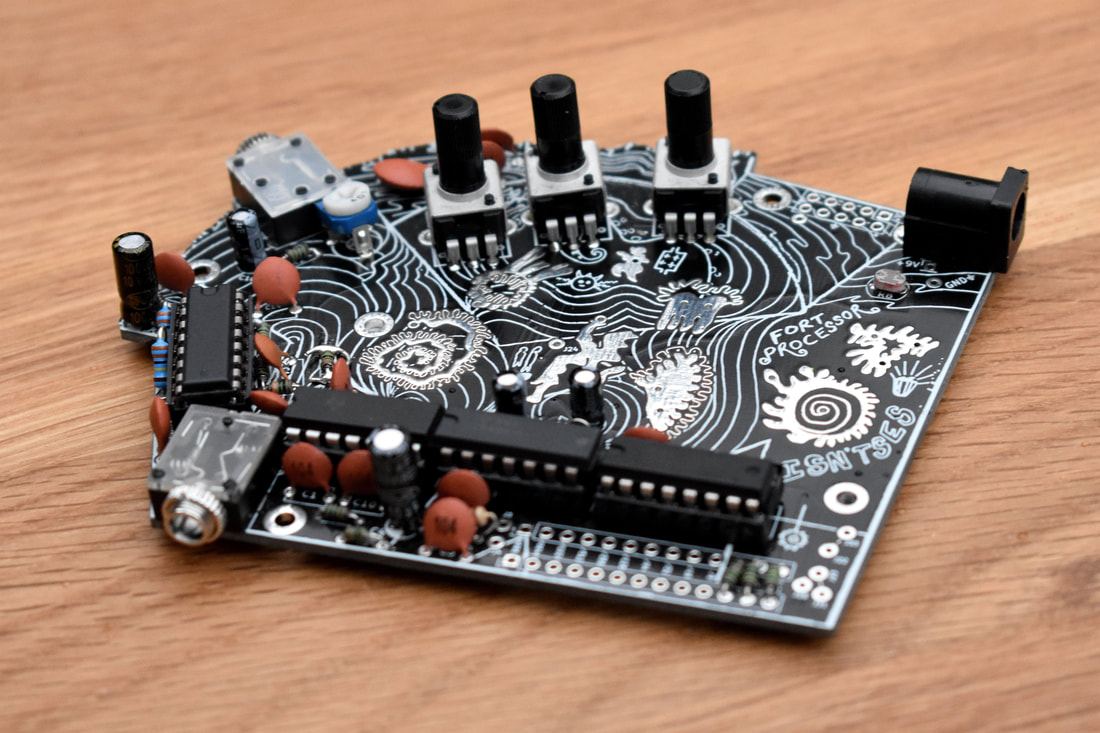
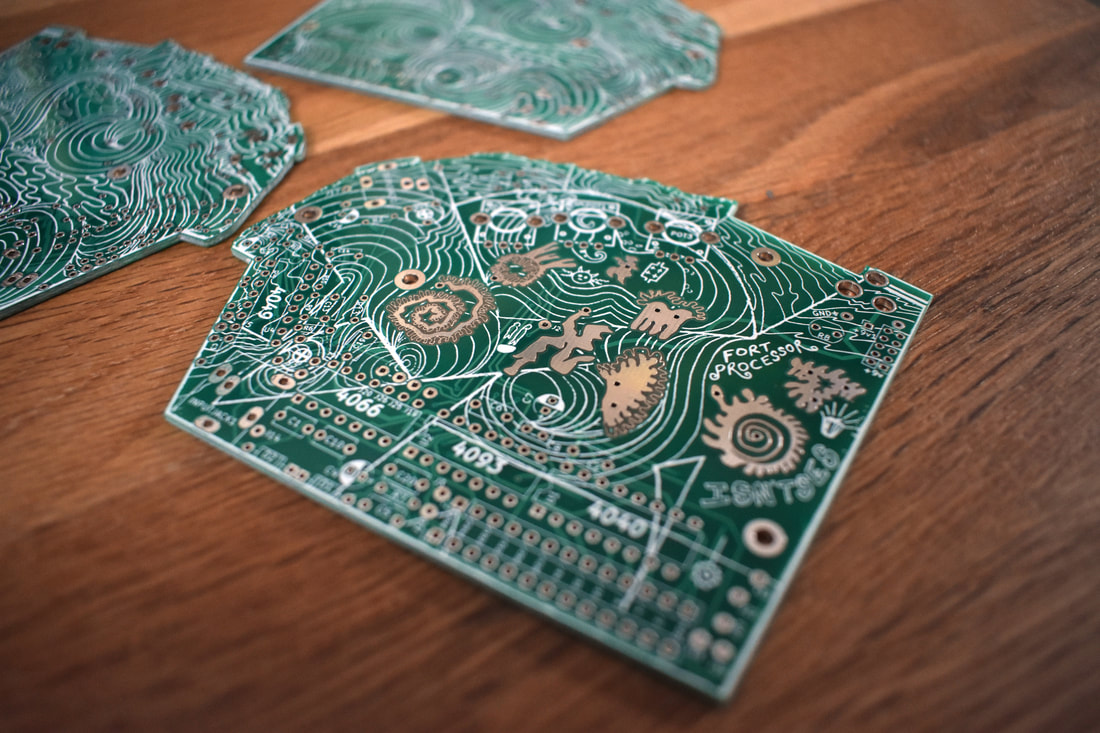
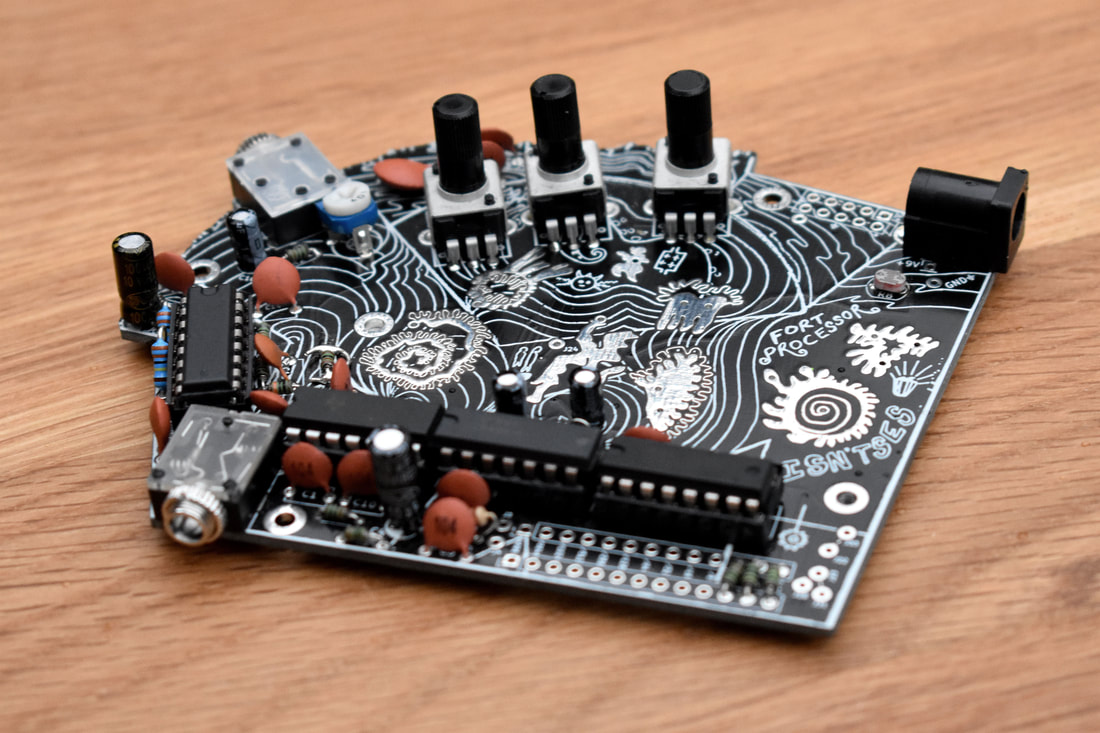
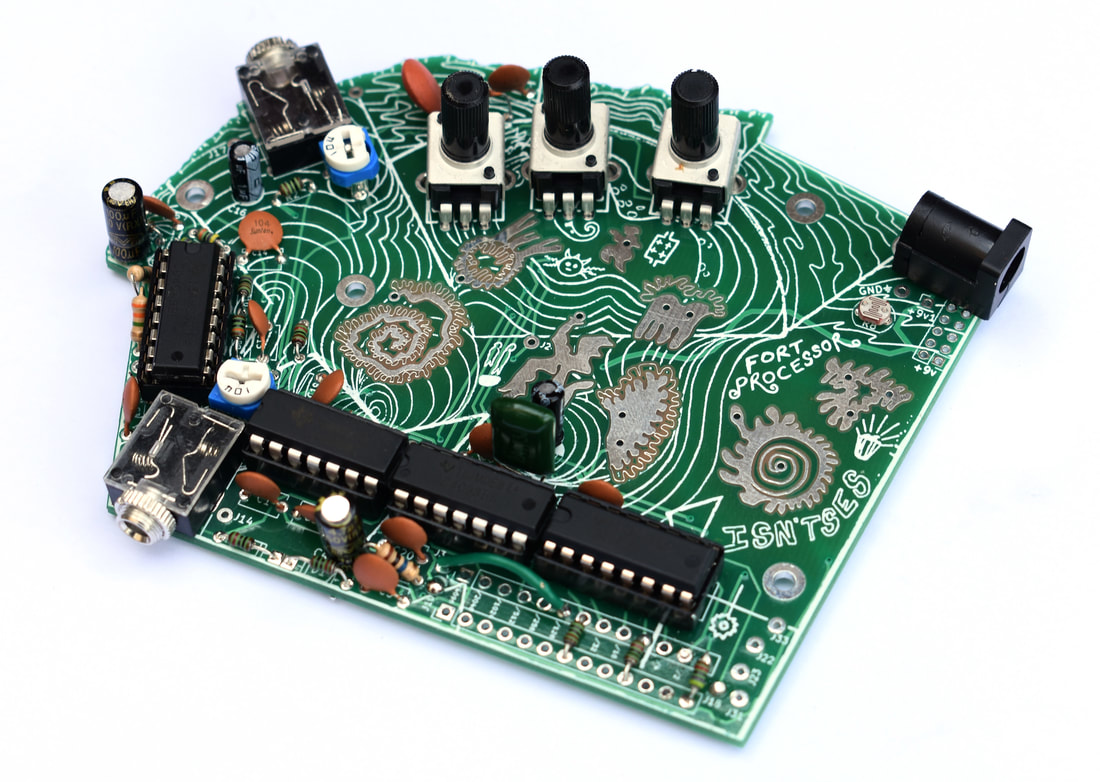
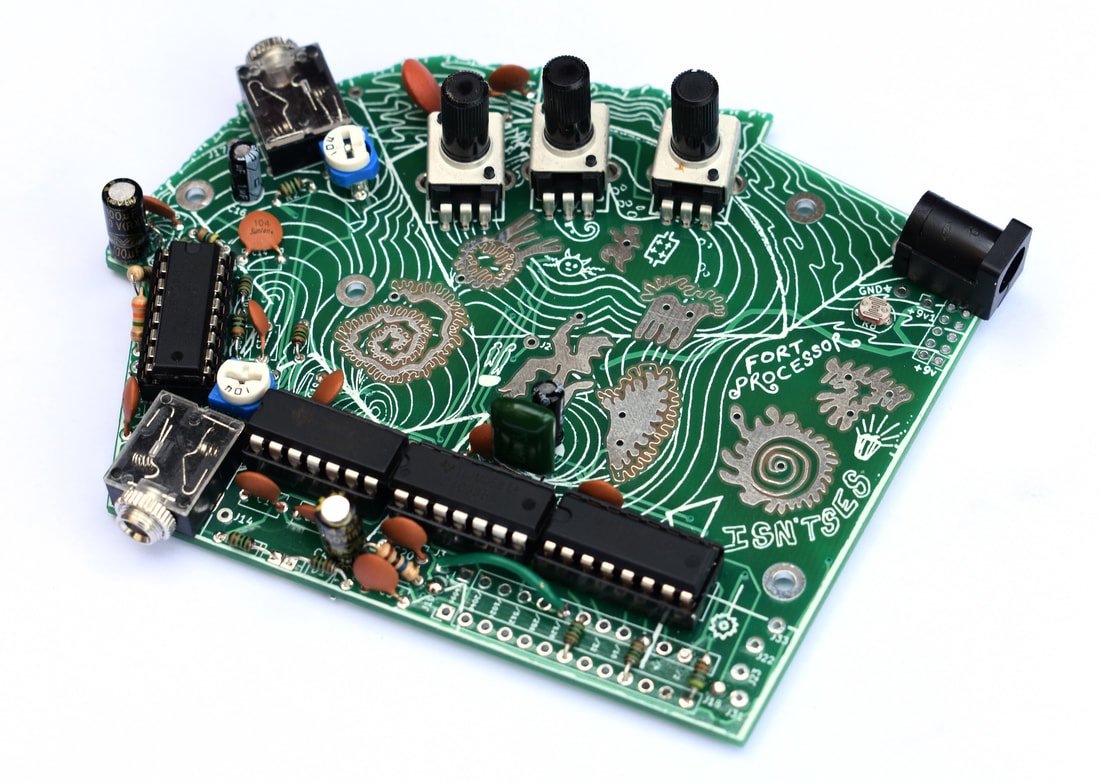
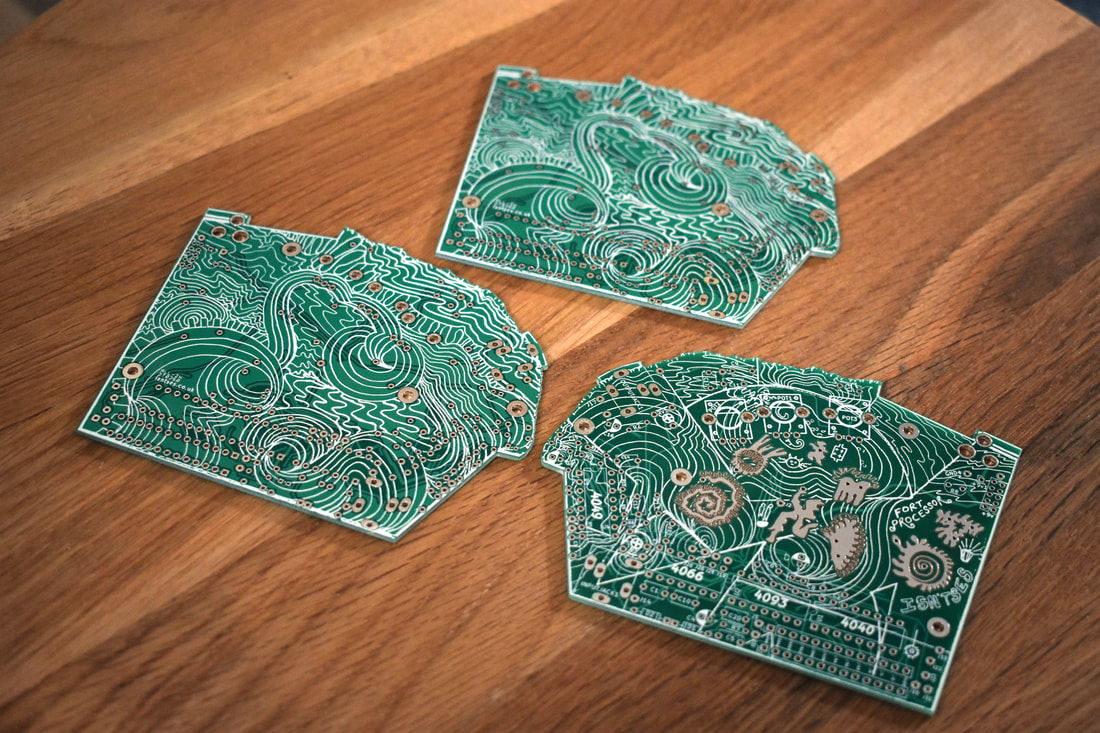
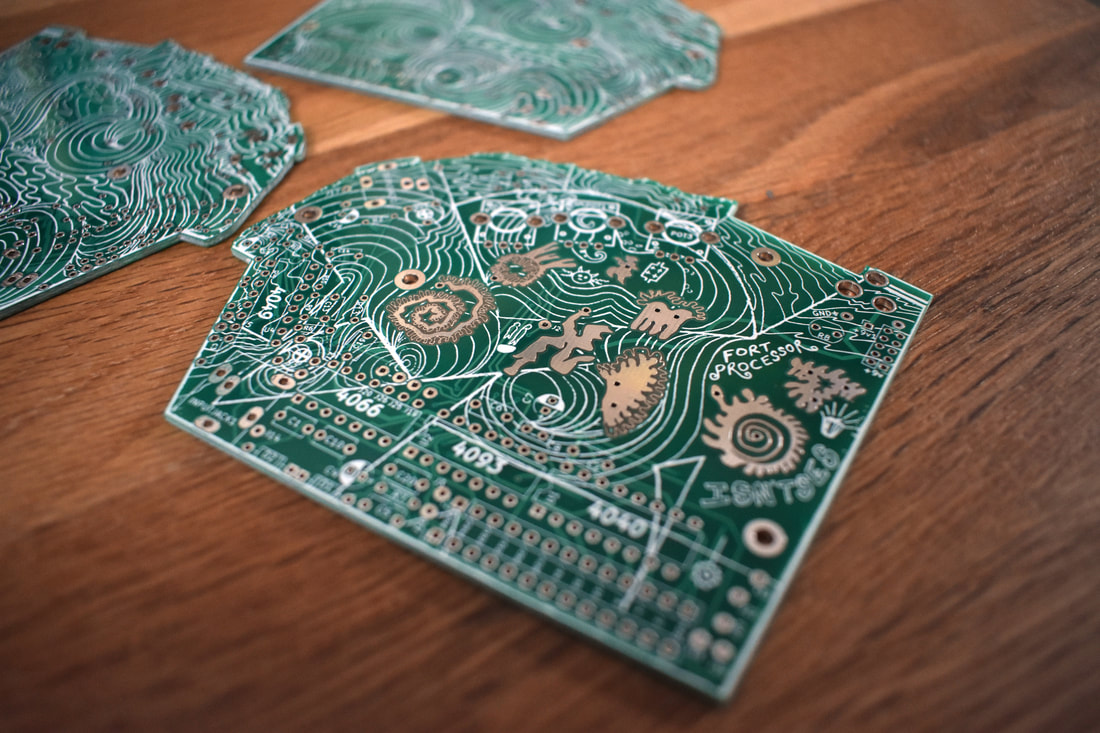
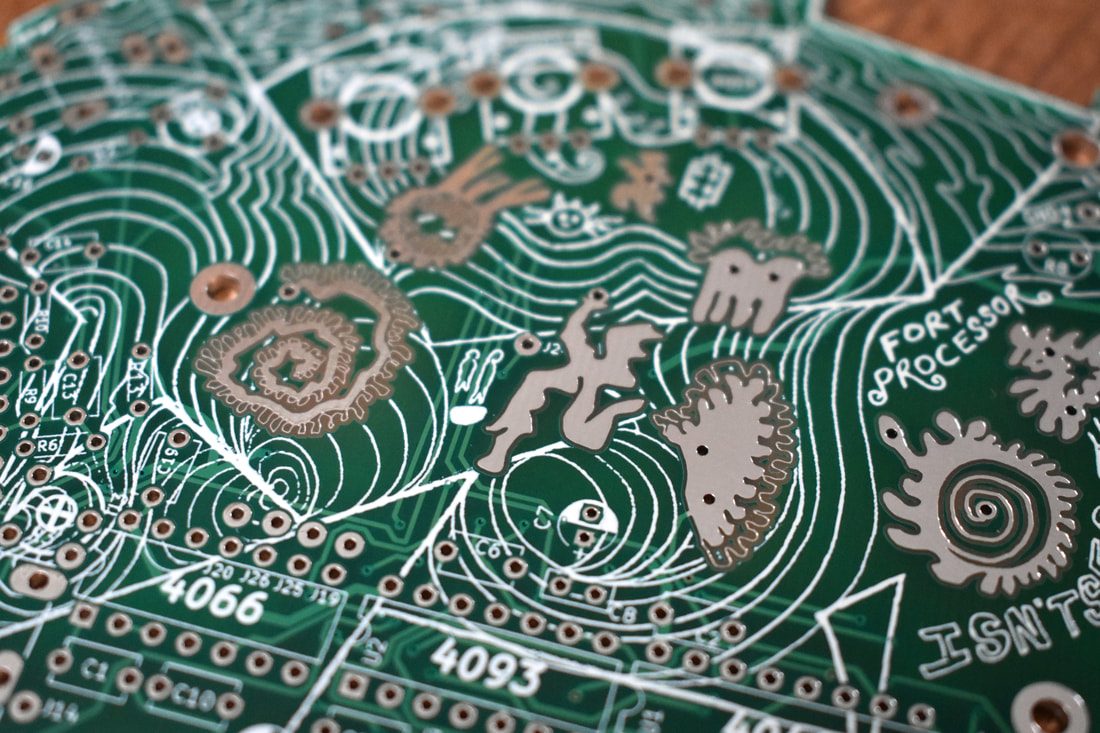
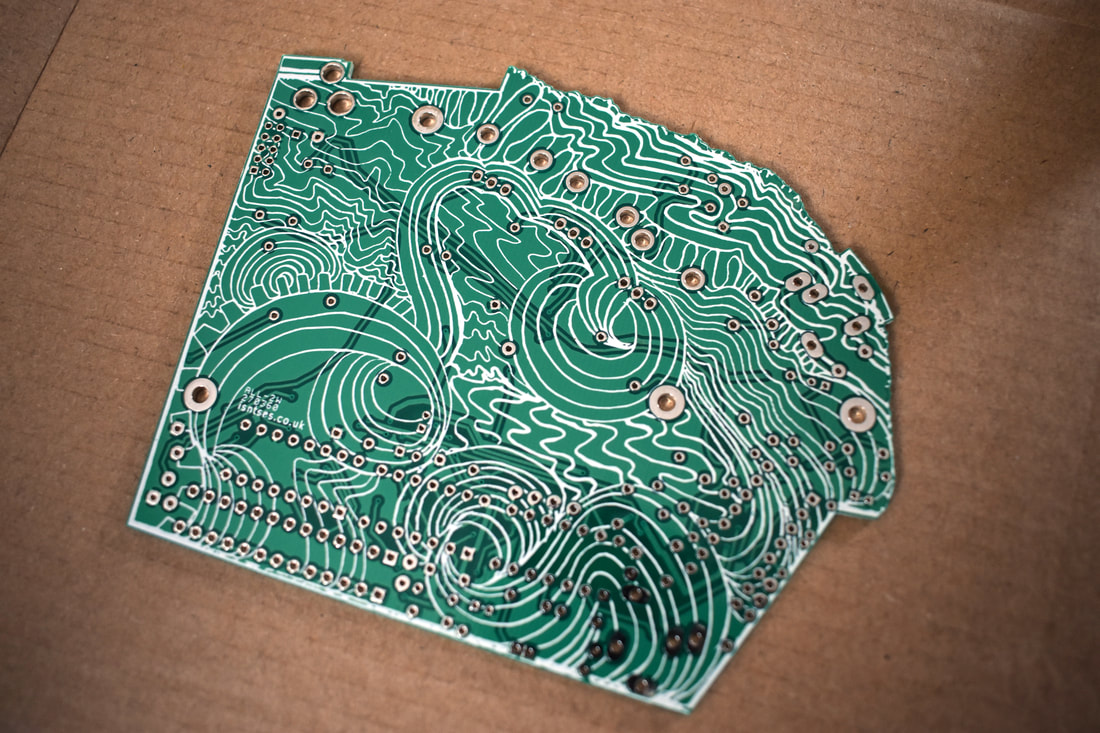
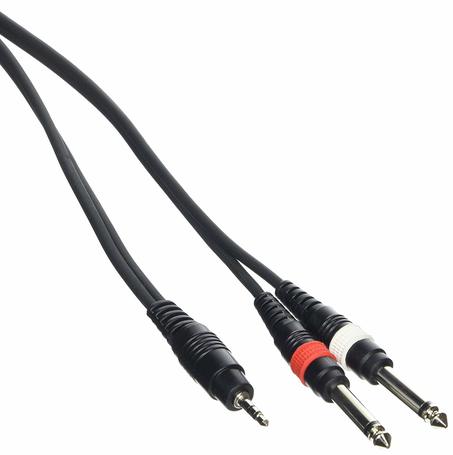
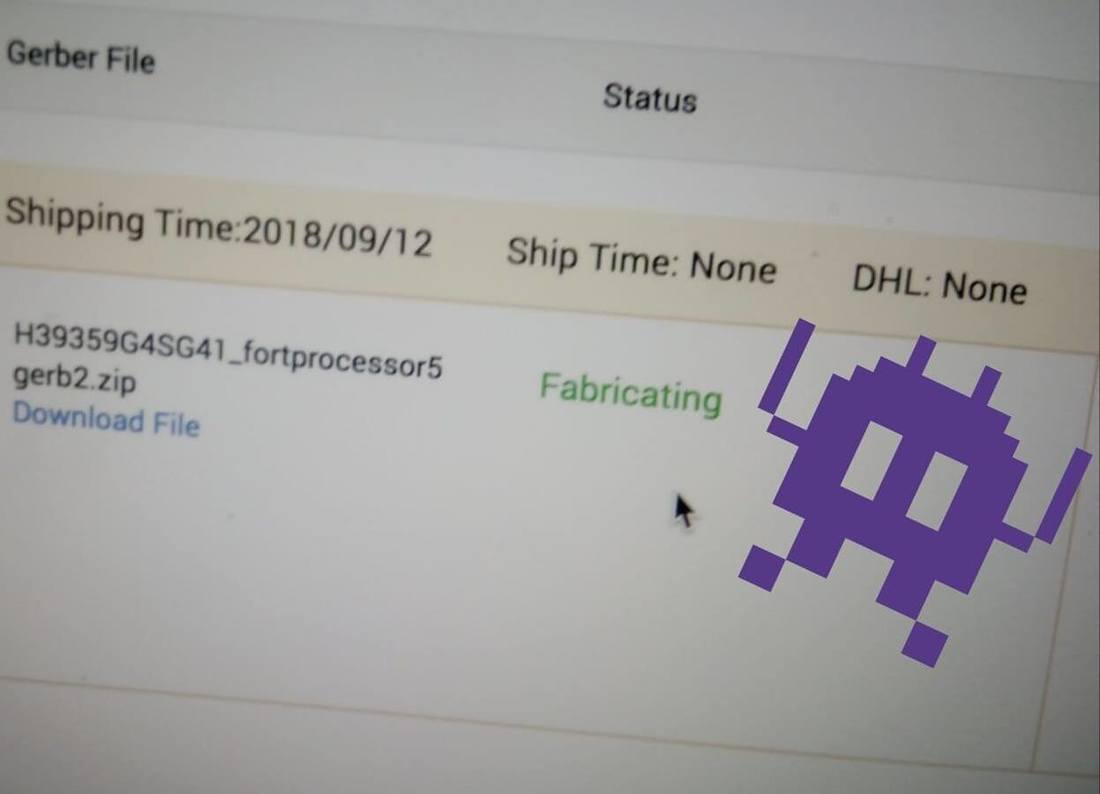

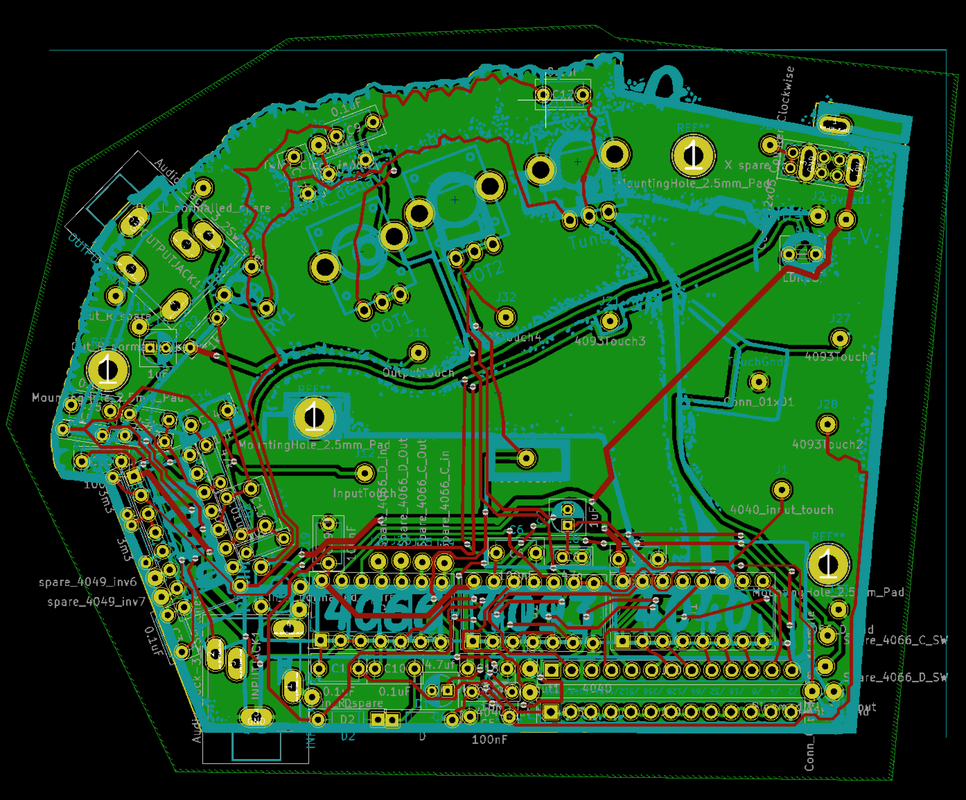
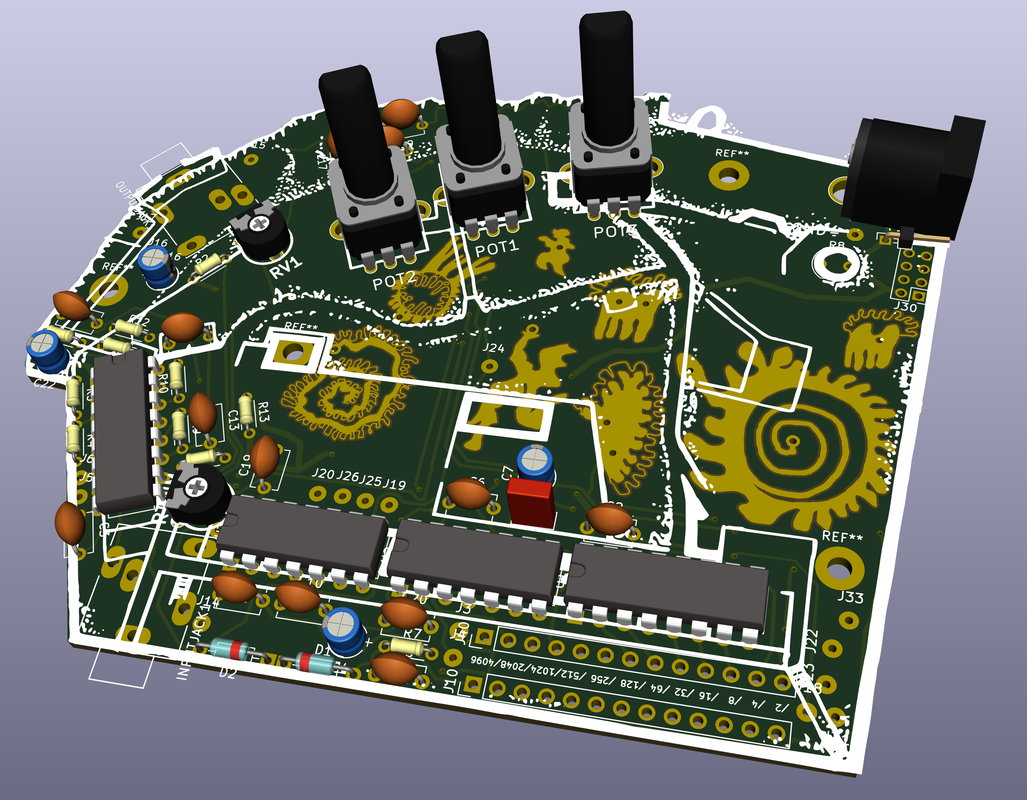
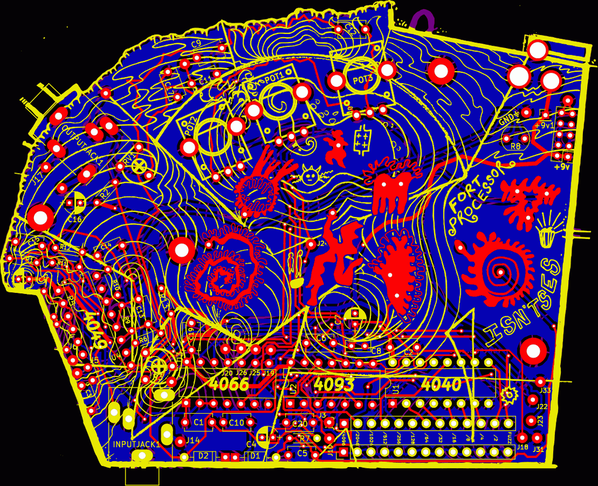
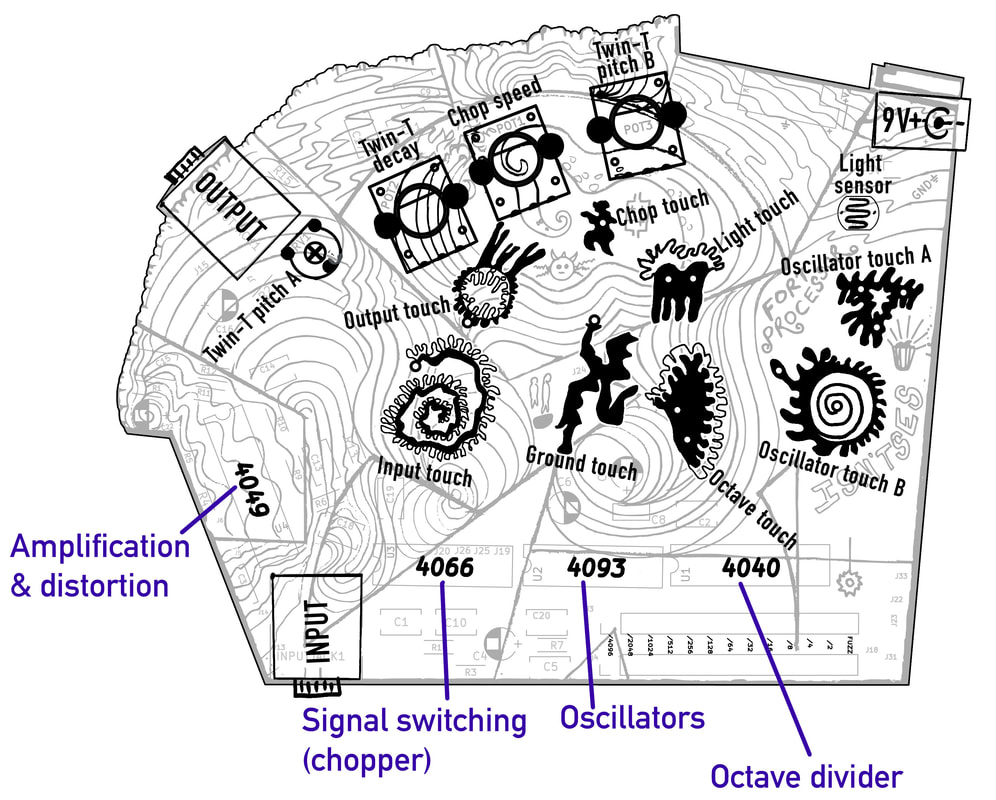
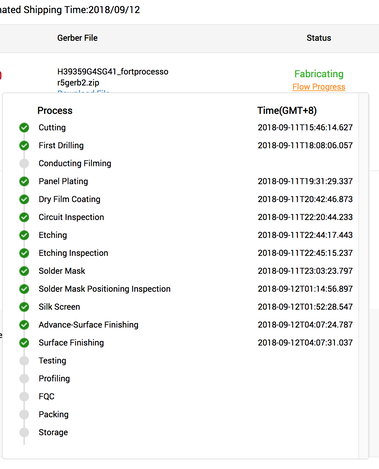
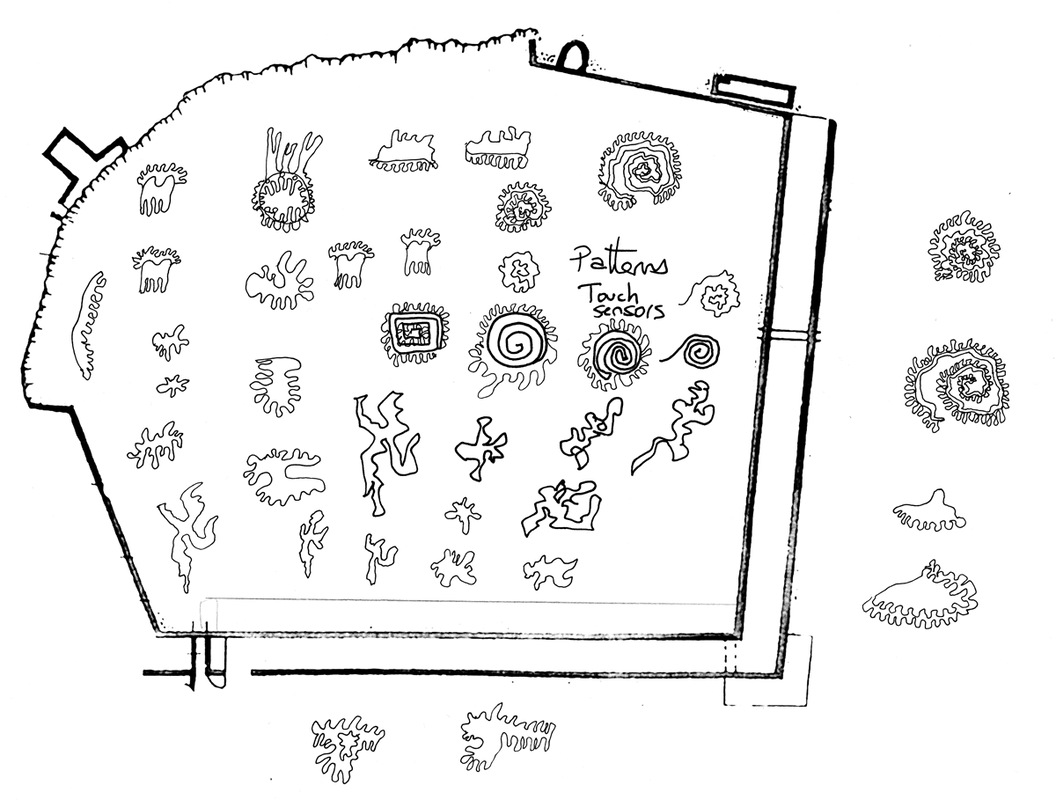

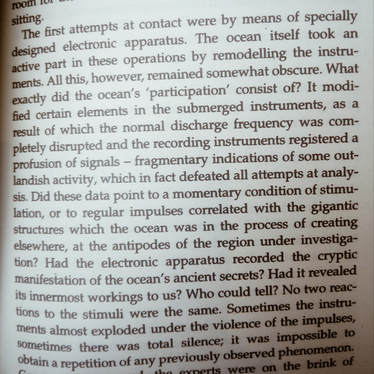
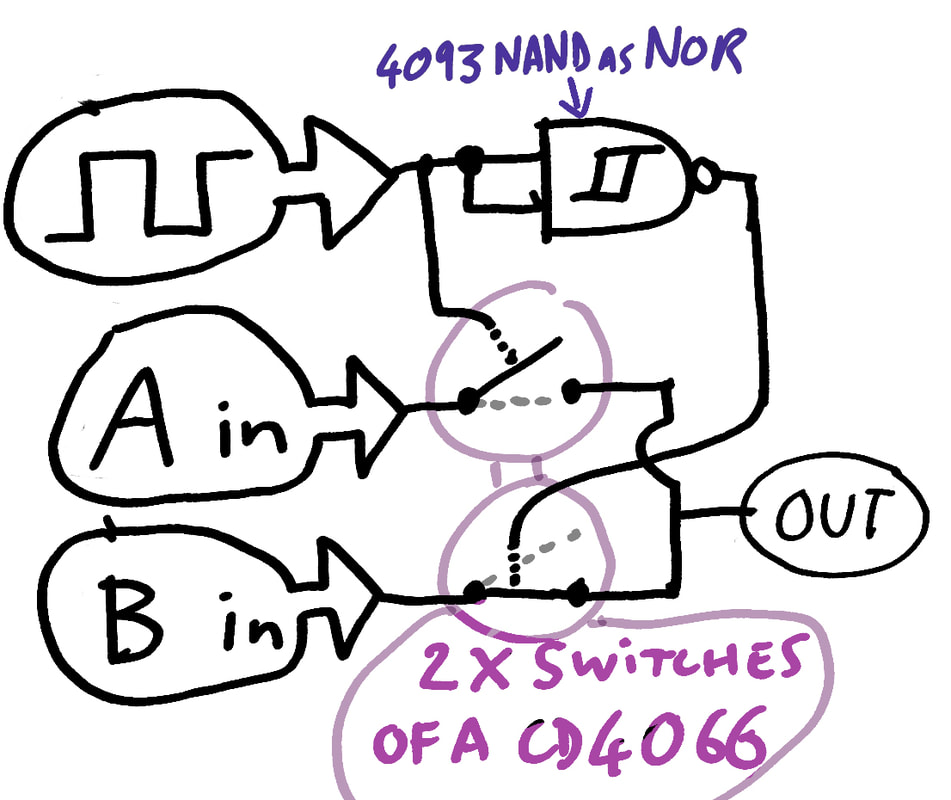
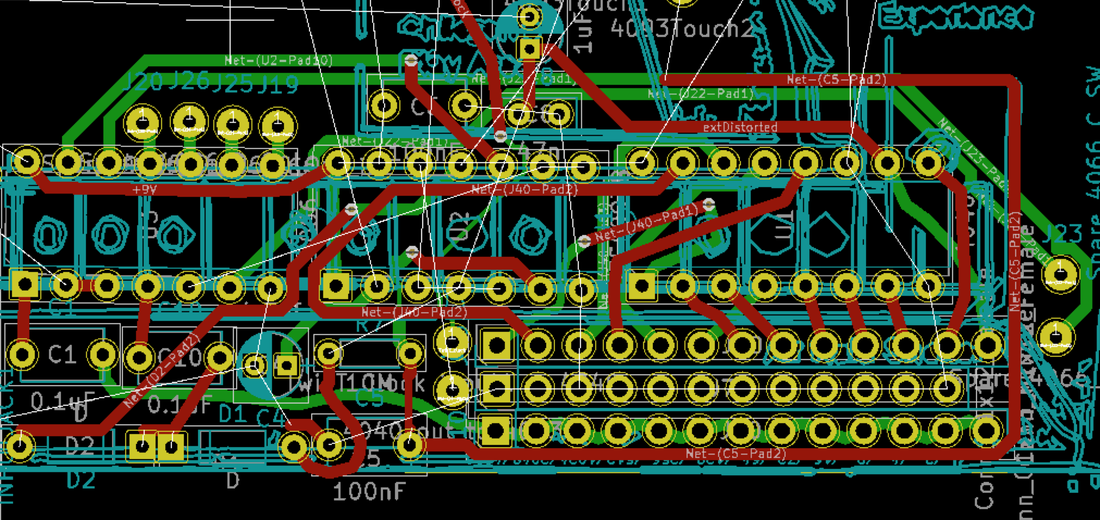
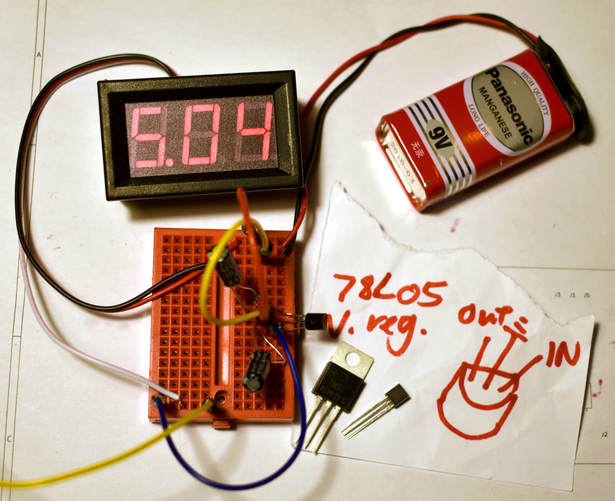

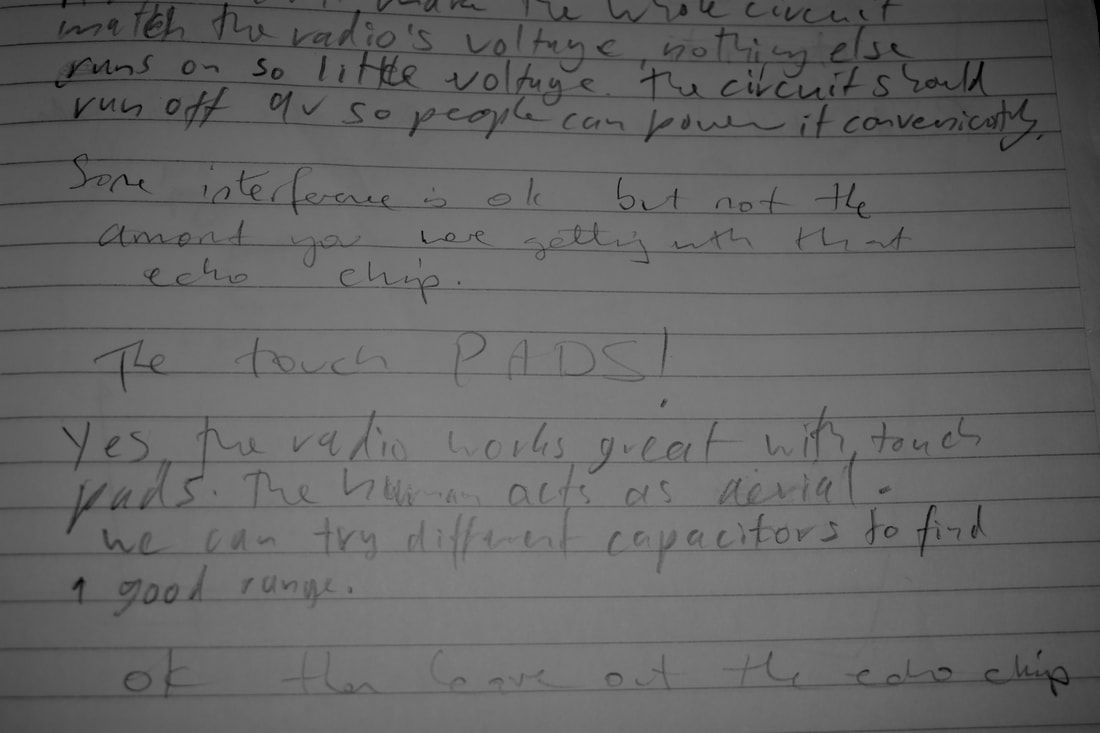
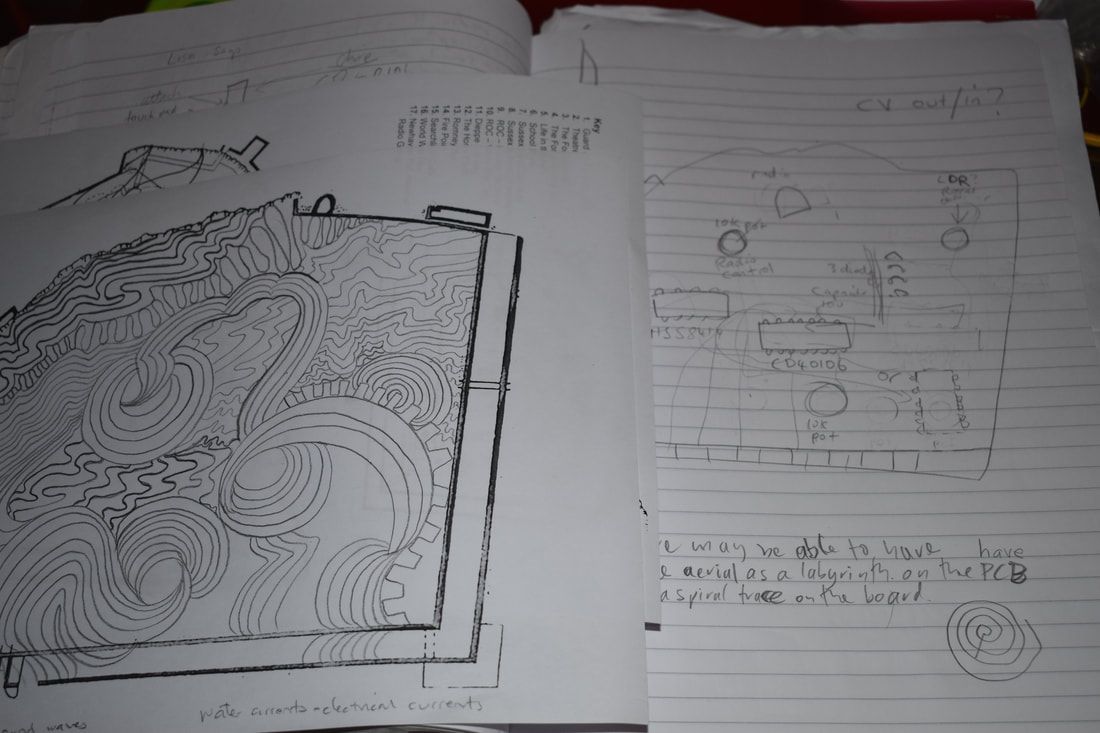
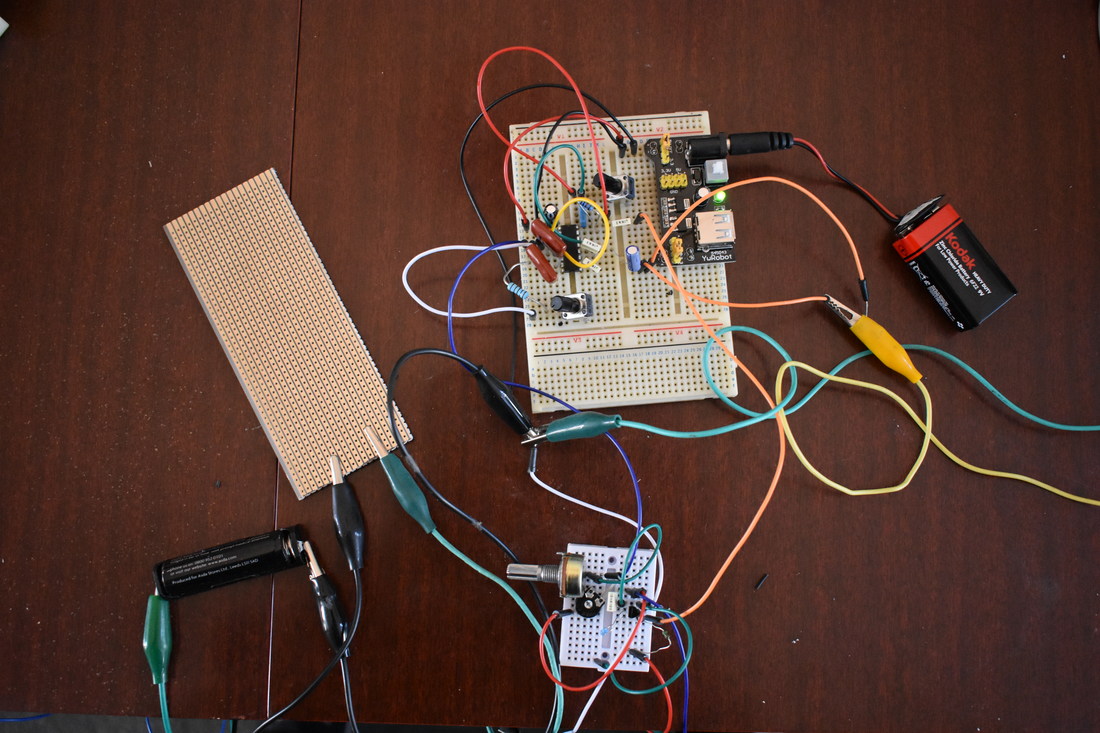
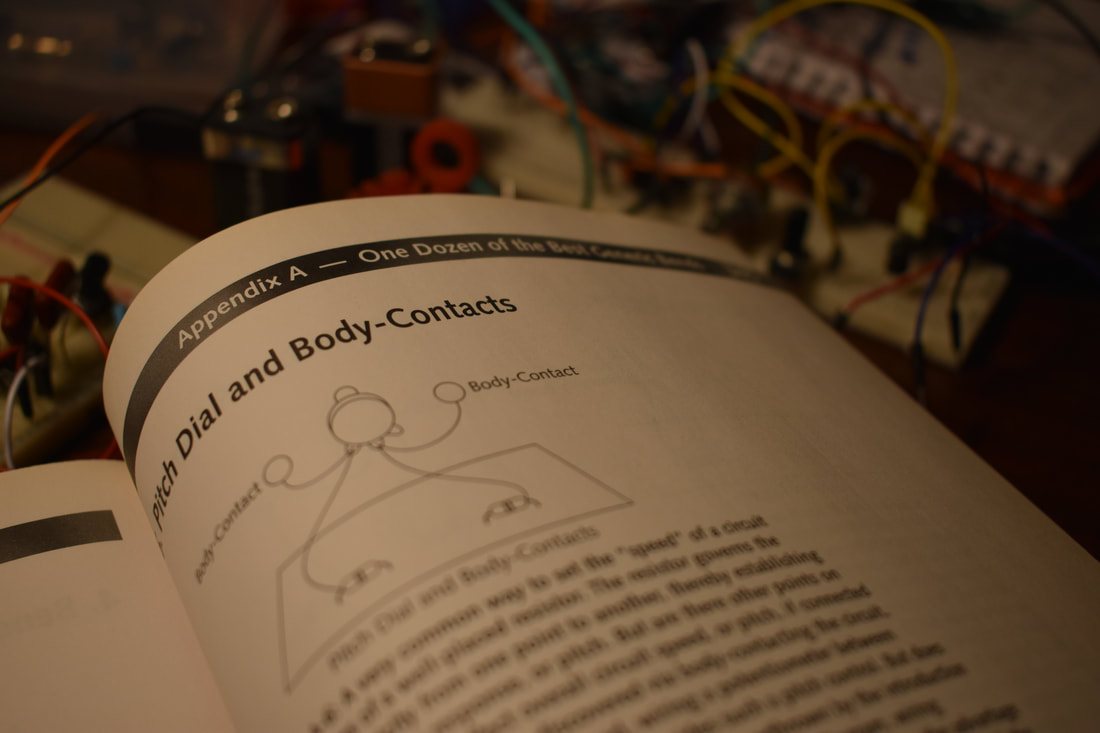


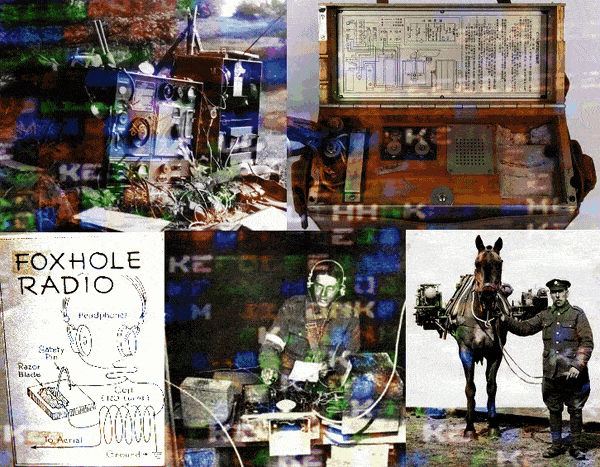
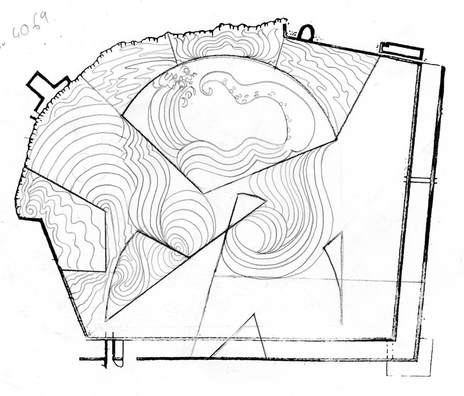
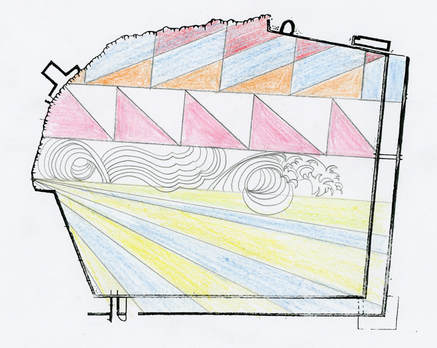
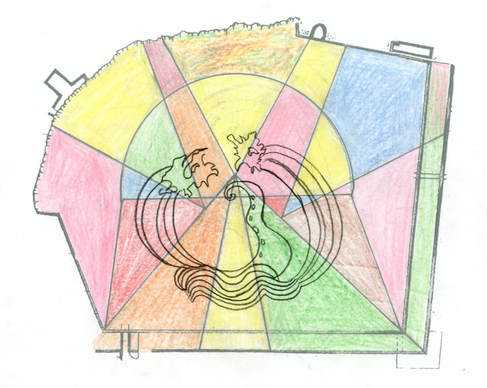
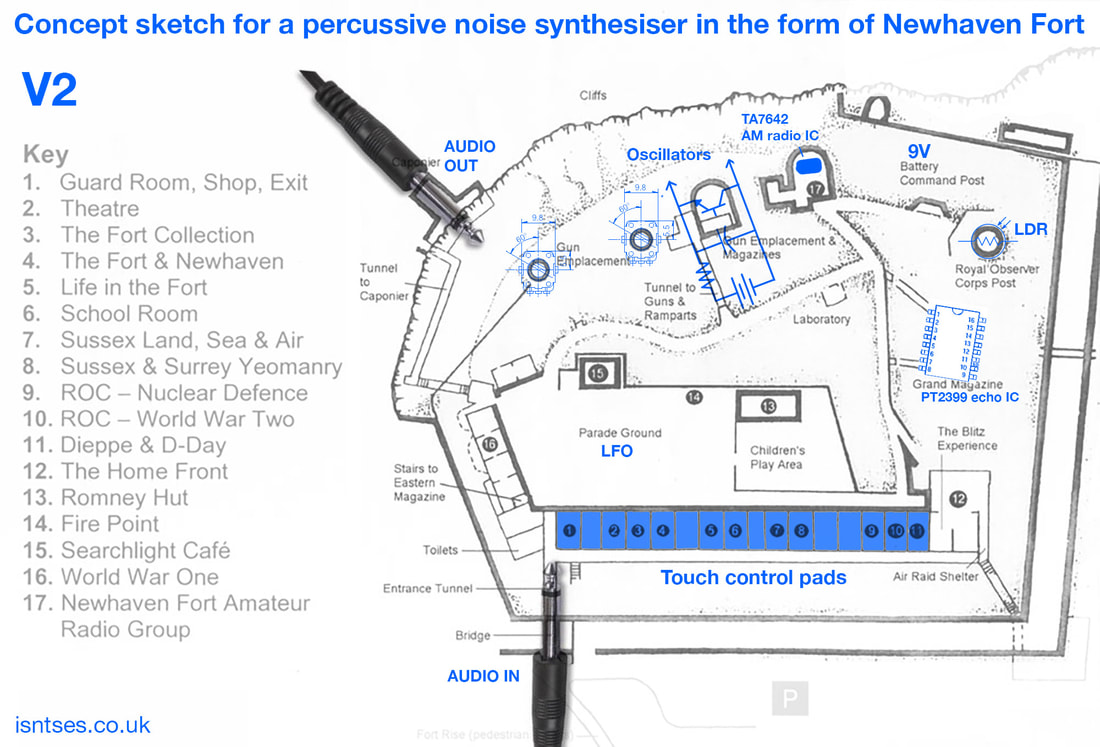
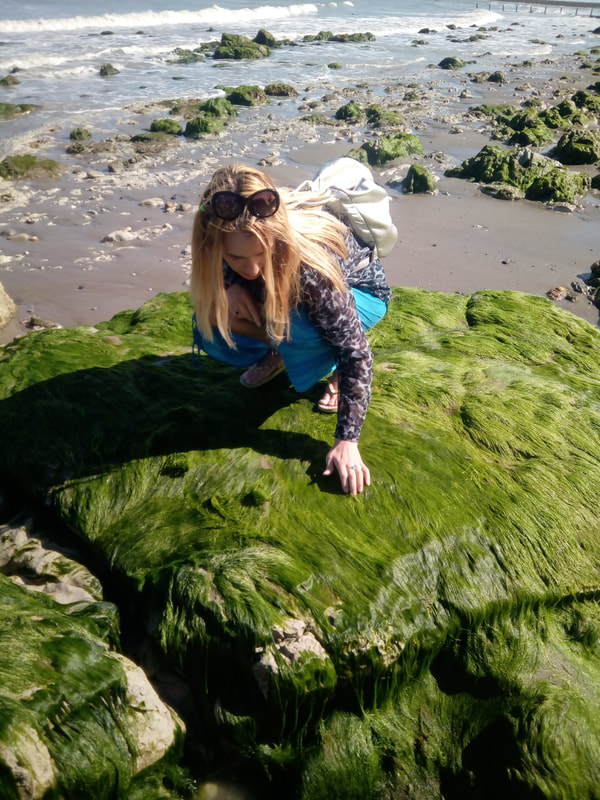

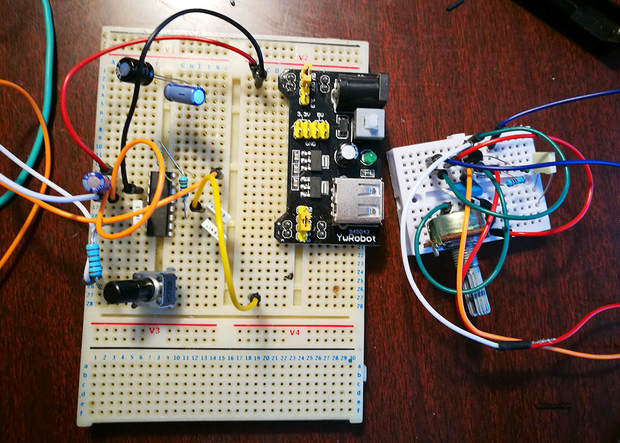
 RSS Feed
RSS Feed
